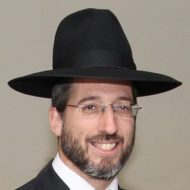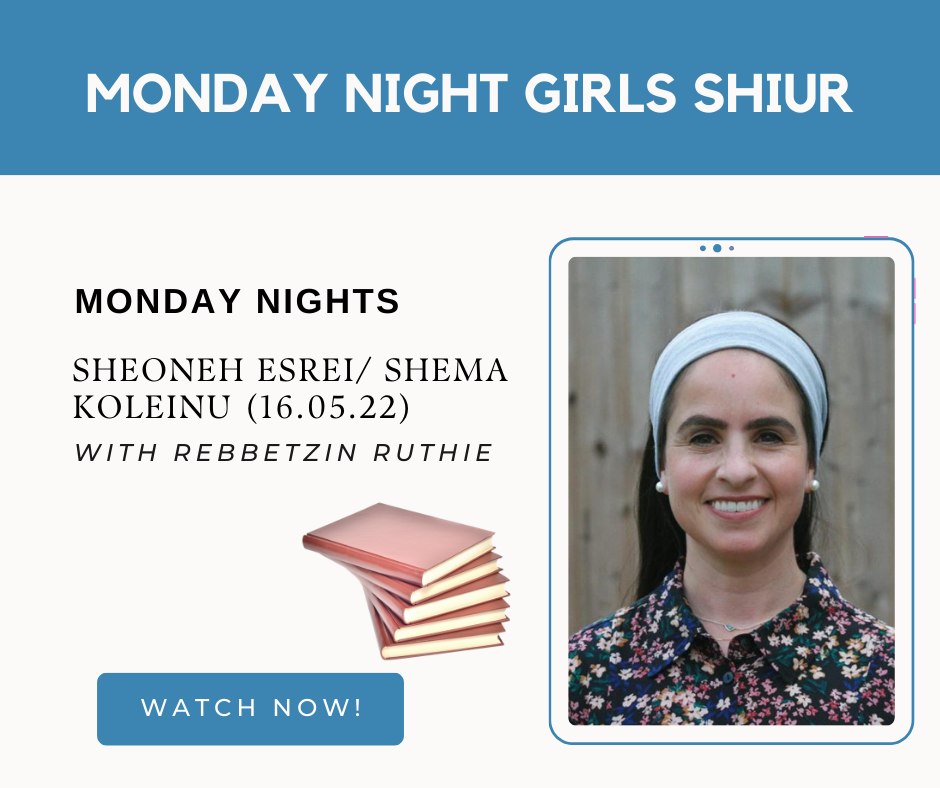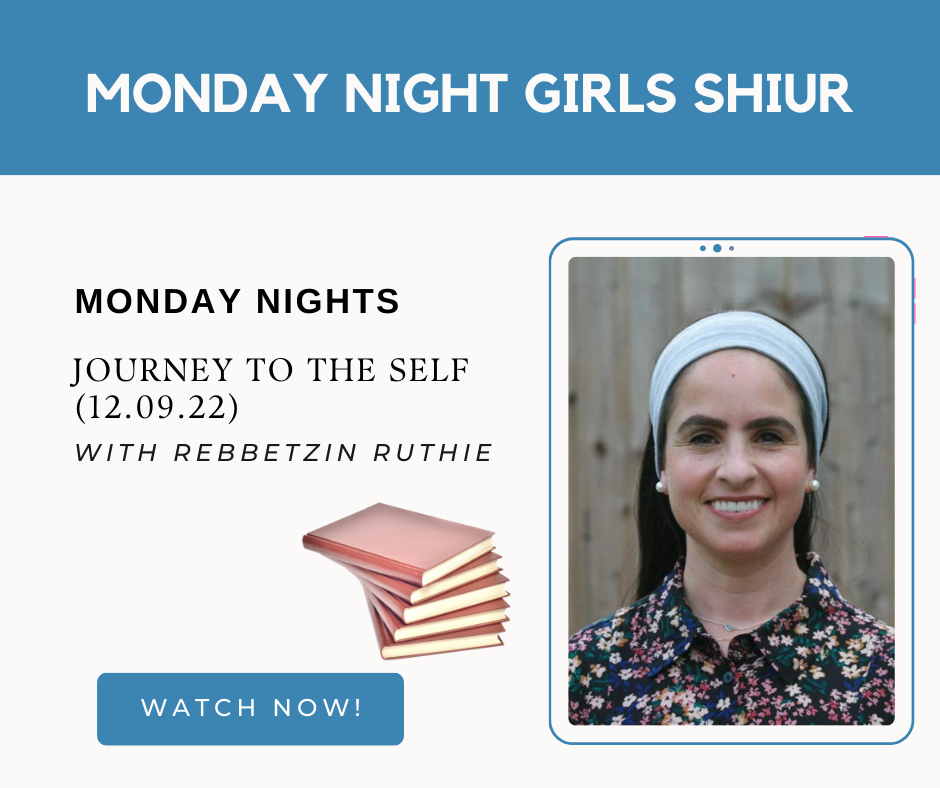
Twenty two long years have passed and finally Yosef meets his father: “He [Yosef] fell on his [father’s] neck, and wept exceedingly” (46:29). Yosef poured out his heart in a sea of tears at the emotional release of seeing his father after so many years. Yaakov’s reaction, however, is not mentioned at all. In fact, at that very moment, the Mefarshim state that Yaakov was reciting the Shema.
On the surface, this seems strange. We know that there are certain times that we have to say the Shema – namely, in the morning Shacharit prayer and at night in the Arvit prayer. Perhaps this was the time to recite the Shema?
But, if it was the time to recite the Shema, then how come Yosef didn’t do so? If, on the other hand, it was not the time for Shema, why did Yaakov recite it? R’ Moshe Shickz”l (“Maharam Shick”;1805-1879) answers that it was not the time for reciting the Shema, and Yaakov recited it for a different reason. He explains: One of the basic lessons of the verse Shema Yisrael is that “Hashem is Elokeinu.” By saying Shema, we acknowledge that there is only One G-d, despite the fact that we see various manifestations of Him. For example, Hashem is sometimes merciful and sometimes strict. (The Name “Hashem” represents G-d’s Attribute of Mercy, while the Name “Elokim” represents G-d’s Attribute of Justice.) Although we rarely understand how this is so, what we perceive as G-d’s strictness is ultimately for our own good; in the long-run, it is merciful.
For twenty-two years, Yosef was missing, and Yaakov saw only the strict side of G-d’s actions. But when he saw Yosef’s royal entourage, he understood that Yosef’s disappearance was part of Hashem’s plan for saving Yaakov and his family from famine. Ultimately, everything that had happened was for the best: “Hashem is Elokeinu.”
Realizing this, Yaakov recited the Shema. Yosef, however, had already learned this lesson when he was freed from jail and appointed viceroy. He had no reason to recite the Shema at this moment. R’ Asher Zelig Schwartz z”l offers another answer to the above question: In verse 28, immediately preceding Yaakov’s reunion with Yosef, we read: “[Yaakov] sent Yehuda ahead of him to Yosef, to prepare the way ahead of him in Goshen.” Rashi explains that Yaakov sent Yehuda to establish a yeshiva for the arriving immigrants. In verse 30, immediately following Yaakov’s reunion with Yosef, we read: “Then Yisrael said to Yosef, `Now I can die, after my having seen your face’.” What is the connection between verses 28 (establishing a yeshiva), 29 (reciting the Shema), and 30 (being willing to die)?
Gemara (Brachot 5a) R. Levi b.Chama said in the name of R. Shimon b. Lakish: “A person should always try and stir his yetzer tov against his yetzer hara, as it says: ‘Tremble and sin not.’” (Tehillim 4:5) If he defeats it – good, and if not, he should study Torah, as it says: “Reflect in your hearts.” (ibid.) If he defeats it – good, and if not, he should recite Shema, as it says: “While on your beds.” (ibid) If he defeats it – good, and if not, he should remind himself of the day of his death, as it says: “Be utterly silent, selah.” (ibid.)
Says R’ Schwartz: Yaakov was afraid that seeing Yosef in all his glory as Prime Minister would make him (Yaakov) feel pride, or would bring out some other improper feeling. Yaakov, therefore, took all of the steps suggested by the Gemara: he established a bet Midrash, he recited the Shema, and he imagined the day of death.
R’ Schwartz adds: If imagining the day of death is an effective means of conquering the yetzer hara, why is it only the fall-back strategy? Why does the Gemara suggest first learning Torah and reciting Shema? The answer is that we are expected to serve Hashem with joy, something to which the third strategy does not lend itself. For implicit in declaring that “G-d is One” is acknowledging that “His watchful concern and His ability extend over all and everything” (Sefer HaChinuch) – that His Providence governs what happens in this world. And when we serve Hashem with this knowledge, then we do so out of joy.
The Gur Aryeh answers further and states that a tzaddik harnesses every opportunity and emotion in the service of Hashem. When Yaakov felt a supreme surge of joy and love at the sight of his beloved son, his first wish was to suppress his own personal joy and channel his emotions into a sublime expression of his love for his Creator. Thus, he recited the Shema, the ultimate acceptance of Hashem’s sovereignty: “And you shall love Hashem, your G-d with all your heart…” At a moment of supreme and almost unimaginably great joy in Yaakov’s life, he makes sure to connect it back to the One Who gave it, to acknowledge that everything has come, and comes, from Him Alone. “Ma’aseh Avot SimanLeBanim”, the Shema has been a symbol of our existence facing against the odds of time, Jews throughout history have held this slogan high. Whether on their death beds, or in prayer, in the morning and the evening, in their Tefilin and in their Mezuzot, this statement has been exclaimed loud and clear. The next time we say the Shema, may we all try to do the same; to strive to reach the level of Yaakov, who, in all moments of life, “clung to the Source of Life. Shema Yisrael Hashem Elokenu Hashem Echad!







